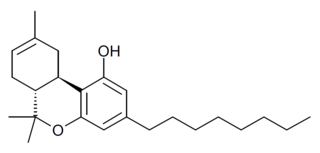
ISO 8601 is an international standard covering the worldwide exchange and communication of date and time-related data. It is maintained by the International Organization for Standardization (ISO) and was first published in 1988, with updates in 1991, 2000, 2004, and 2019, and an amendment in 2022. The standard provides a well-defined, unambiguous method of representing calendar dates and times in worldwide communications, especially to avoid misinterpreting numeric dates and times when such data is transferred between countries with different conventions for writing numeric dates and times.

Statistics is the discipline that concerns the collection, organization, analysis, interpretation, and presentation of data. In applying statistics to a scientific, industrial, or social problem, it is conventional to begin with a statistical population or a statistical model to be studied. Populations can be diverse groups of people or objects such as "all people living in a country" or "every atom composing a crystal". Statistics deals with every aspect of data, including the planning of data collection in terms of the design of surveys and experiments.

Time is the continued sequence of existence and events that occurs in an apparently irreversible succession from the past, through the present, and into the future. It is a component quantity of various measurements used to sequence events, to compare the duration of events or the intervals between them, and to quantify rates of change of quantities in material reality or in the conscious experience. Time is often referred to as a fourth dimension, along with three spatial dimensions.

Tetrahydrocannabinol (THC) is a terpenoid found in cannabis. It is the principal psychoactive constituent of cannabis and one of at least 113 total cannabinoids identified on the plant. Its chemical formula C21H30O2 includes compounds, the term THC usually refers to the delta-9-THC isomer with chemical name (−)-trans-Δ9-tetrahydrocannabinol. It is a colorless oil.

The effects of cannabis are caused by chemical compounds in the cannabis plant, including 113 different cannabinoids such as tetrahydrocannabinol (THC) and 120 terpenes, which allow its drug to have various psychological and physiological effects on the human body. Different plants of the genus Cannabis contain different and often unpredictable concentrations of THC and other cannabinoids and hundreds of other molecules that have a pharmacological effect, so the final net effect cannot reliably be foreseen.
A keepalive (KA) is a message sent by one device to another to check that the link between the two is operating, or to prevent the link from being broken.

High-intensity interval training (HIIT) is a training protocol alternating short periods of intense or explosive anaerobic exercise with brief recovery periods until the point of exhaustion. HIIT involves exercises performed in repeated quick bursts at maximum or near maximal effort with periods of rest or low activity between bouts. The very high level of intensity, the interval duration, and number of bouts distinguish it from aerobic (cardiovascular) activity, because the body significantly recruits anaerobic energy systems. The method thereby relies on "the anaerobic energy releasing system almost maximally".

Karl von Vierordt was a German physiologist.

Cannabis tea is a cannabis-infused drink prepared by steeping various parts of the cannabis plant in hot or cold water. Cannabis tea is commonly recognized as an alternative form of preparation and consumption of the cannabis plant, more popularly known as marijuana, pot, or weed. This plant has long been recognized as an herbal medicine employed by health professionals worldwide to ease symptoms of disease, as well as a psychoactive drug used recreationally and in spiritual traditions. Though less commonly practiced than popular methods like smoking or consuming edibles, drinking cannabis tea can produce comparable physical and mental therapeutic effects. Such effects are largely attributed to the THC and CBD content of the tea, levels of which are drastically dependent on individual preparation techniques involving volume, amount of cannabis, and boiling time. Also in common with these administration forms of cannabis is the heating component performed before usage. Due to the rather uncommon nature of this particular practice of cannabis consumption in modern times as well as the legality of cannabis throughout the World, the research available on the composition of cannabis tea is limited and based broadly around what is known of cannabis as it exists botanically.
The kappa effect or perceptual time dilation is a temporal perceptual illusion that can arise when observers judge the elapsed time between sensory stimuli applied sequentially at different locations. In perceiving a sequence of consecutive stimuli, subjects tend to overestimate the elapsed time between two successive stimuli when the distance between the stimuli is sufficiently large, and to underestimate the elapsed time when the distance is sufficiently small.

Mental chronometry is the scientific study of processing speed or reaction time on cognitive tasks to infer the content, duration, and temporal sequencing of mental operations. Reaction time is measured by the elapsed time between stimulus onset and an individual's response on elementary cognitive tasks (ECTs), which are relatively simple perceptual-motor tasks typically administered in a laboratory setting. Mental chronometry is one of the core methodological paradigms of human experimental, cognitive, and differential psychology, but is also commonly analyzed in psychophysiology, cognitive neuroscience, and behavioral neuroscience to help elucidate the biological mechanisms underlying perception, attention, and decision-making in humans and other species.
The study of time perception or chronoception is a field within psychology, cognitive linguistics and neuroscience that refers to the subjective experience, or sense, of time, which is measured by someone's own perception of the duration of the indefinite and unfolding of events. The perceived time interval between two successive events is referred to as perceived duration. Though directly experiencing or understanding another person's perception of time is not possible, perception can be objectively studied and inferred through a number of scientific experiments. Some temporal illusions help to expose the underlying neural mechanisms of time perception.

Lenabasum (also known as ajulemic acid, 1',1'-dimethylheptyl-delta-8-tetrahydrocannabinol-11-oic acid, DMH-D8-THC-11-OIC, AB-III-56, HU-239, IP-751, CPL 7075, CT-3, JBT-101, Anabasum, and Resunab) is a synthetic cannabinoid that shows anti-fibrotic and anti-inflammatory effects in pre-clinical studies without causing a subjective "high". Although its design was inspired by a metabolite of delta-9-THC known as delta-9-THC-11-oic acid, lenabasum is an analog of the delta-8-THC metabolite delta-8-THC-11-oic acid. It is being developed for the treatment of inflammatory and fibrotic conditions such as systemic sclerosis, dermatomyositis and cystic fibrosis. It does not share the anti-emetic effects of some other cannabinoids, but may be useful for treating chronic inflammatory conditions where inflammation fails to resolve. Side effects include dry mouth, tiredness, and dizziness. The mechanism of action is through activation of the CB2 receptor leading to production of specialized proresolving eicosanoids such as lipoxin A4 and prostaglandin J2. Studies in animals at doses up to 40 mg/kg show minimal psychoactivity of lenabasum, compared to that produced by tetrahydrocannabinol. Lenabasum is being developed by Corbus Pharmaceuticals (formerly JB Therapeutics) for the treatment of orphan chronic life-threatening inflammatory diseases. Development since been discontinued.

Dimethylheptylpyran is a synthetic analog of THC, which was invented in 1949 during attempts to elucidate the structure of Δ9-THC, one of the active components of Cannabis. DMHP is a pale yellow, viscous oil which is insoluble in water but dissolves in alcohol or non-polar solvents.

Cannabis consumption refers to the variety of ways cannabis is consumed, among which inhalation and ingestion are most common. All consumption methods involve heating the plant's THCA to decarboxylate it into THC, either at the time of consumption or during preparation. Salves and absorption through the skin (transdermal) are increasingly common in medical uses, both of CBD, THC, and other cannabinoids. Each method leads to subtly different psychoactive effects due to the THC and other chemicals being activated, and then consumed through different administration routes. It is generally considered that smoking, which includes combustion toxins, comes on quickly but lasts for a short period of time, while eating delays the onset of effect but the duration of effect is typically longer. In a 2007 ScienceDaily report of research conducted at the University of California–San Francisco, researchers reported that vaporizer users experience the same biological effect, but without the toxins associated with smoking. Δ9-THC is the primary component when inhaled, but when eaten the liver converts this to the more psychoactive 11-hydroxy-THC form.

Tetrahydrocannabinolic acid is a precursor of tetrahydrocannabinol (THC), an active component of cannabis.

Harris Isbell was an American pharmacologist and the director of research for the NIMH Addiction Research Center at the Public Health Service Hospital in Lexington, Kentucky from 1945 to 1963. He did extensive research on the physical and psychological effects of various drugs on humans. Early work investigated aspects of physical dependence with opiates and barbiturates, while later work investigated psychedelic drugs, including LSD. The research was extensively reported in academic journals such as the Journal of Pharmacology and Experimental Therapeutics, Psychopharmacologia, and the AMA Archives of Neurology and Psychiatry.

Cannabis concentrate, also called marijuana concentrate, marijuana extract, or cannabis extract, is a tetrahydrocannabinol (THC) and/or cannabidiol (CBD) concentrated mass. Cannabis concentrates contain high THC levels that range from 40% to over 90%, stronger in THC content than high-grade marijuana, which normally measures around 20% THC levels.

Two main questions arise in the law surrounding driving after having ingested cannabis: (1) whether cannabis actually impairs driving ability, and (2) whether the common practice of testing for THC is a reliable means to measure impairment. On the first question, studies are mixed. Several recent, extensive studies–including one conducted by the National Highway Traffic Safety Administration and one conducted by the American Automobile Association (AAA)–show that drivers with detectable THC in their blood are no more likely to cause car crashes than drivers with no amount of THC in their blood. Others show that cannabis can impair certain abilities important to safe driving –but no studies have been able to show that this increases the actual risk of crashing, or that drivers with THC in their blood cause a disproportionate number of crashes. On the second question, the studies that have been conducted so far have consistently found that THC blood levels and degree of impairment are not closely related. No known relationship between blood levels of THC and increased relative crash risk, or THC blood levels and level of driving impairment, has been shown by single-crash or classic-control studies. Thus, even though it is possible that cannabis impairs driving ability to some extent, there are currently no reliable means to test or measure whether a driver was actually impaired.

JWH-138 (THC-Octyl, Δ8-THC-C8) is a synthetic cannabinoid first synthesised by John W. Huffman, with a Ki of 8.5nM at the CB1 cannabinoid receptor. THC-Octyl and its hydrogenated analog HHC-Octyl was synthesized and studied by Roger Adams as early as 1942.













